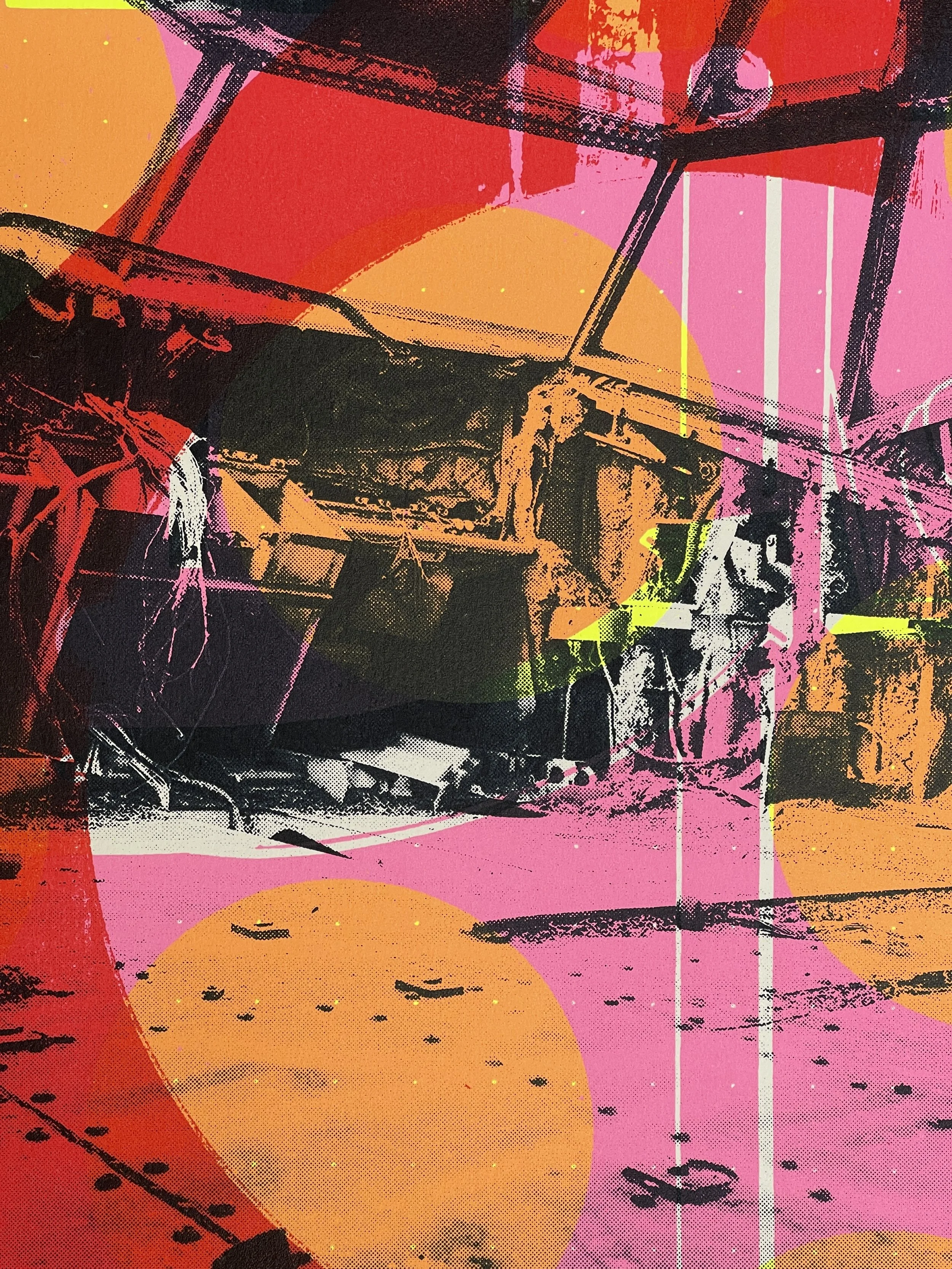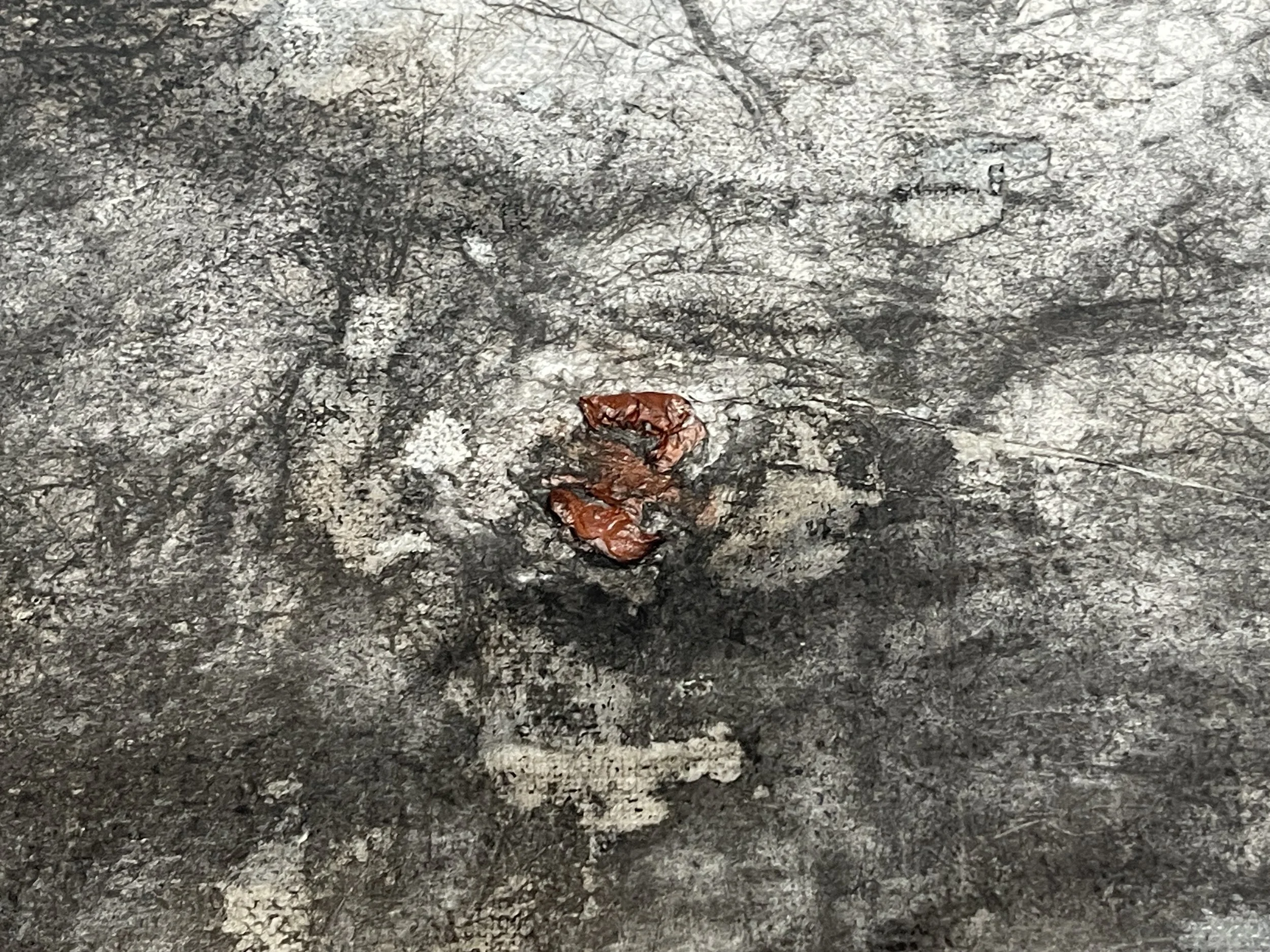Printed Matter Collection
Earth by Geoff Diego Litherland
With this collection I really wanted to show artist’s concerned with the making of the thing, materiality and a deep connection to the earth through their practice. These artists were selected from a call out I made.
I was really pleased when I saw that Geoff Diego Litherland submitted a piece, I’ve been following his work for quite some time, and as a self-proclaimed Methodicalist myself, I’m drawn to the process heavy nature of his artworks. This is an artist who decided to grow Linseed, harvest it, dry it out, make it into yarn and weave it to create a a very unique substrate on which to paint. An artist who used Shale dug up from 100m below his home in Derbyshire to make a pigment, which he then made mono prints with on Limestone paper. When I think of Litherland’s work, I think of vast great big landscapes, journeys into the otherworldly dimensions through portals impenetrable by the distracted. The cosmic atmosphere, a grand vacuum of space uninhabitable or so they say.
The journey of a painting is more of a joy when the artist is the one who not just inputs colours and shapes but who discovers the colours, textures, materials and puts them to work, manipulating them and letting them act as they do naturally. There is an element of chance and there is the unknown with new materials. And when the artist experiments with materials to the extent that they are the ones making/mining/weaving them, they can better understand how to manipulate them to their advantage, they are way more connected to them.
Detail of Martin Leedham’s work
That said, there is joy to be had at using ready made materials too. One artist who has incorporated ready made materials is Martin Leedham, another artist based in Derbyshire but whom travelled to the Mojave Desert, Southern California in late 2024 he said “After photographing the fuselage in empty desert for less than five minutes, a car arrived full of men who did not speak to me but were clearly wishing me to leave. Upon later closer inspection of my images, I realised that most of the graffiti tags on the cockpit belonged to local Mexican street gangs.” This work vibrant in colours, with a narrative that sounds like the start of a Hunter S.Thompson story, it draws me in, I’m in the desert, I’m suddenly afraid but also intrigued at what induced such a reaction from these men who turned up to the abandoned relic. The images are truly the stuff that can start to evoke dreamlike stories within my mind. What would a contemporary Thompson make of this, where would he go with it? That’s all I can think of now.
These works where screen printed, borderless with shapes going off the surface because these are monumental structures within a vast empty desert, creating yet another portal into the otherworld, only this time a heat induced mirage, with graffiti off-gassing toxic fumes as vibrant as the colours used in graffiti by Mexican street gangs. Are these threats or warnings? Feuds sprayed onto what once may have been planes smuggling contraband but has become desert furniture.
Detail of Mia Graham’s Work
Mia Graham’s work also looks at relics from the past, empty shells or lumps of post-industrial and rural environments, informed by a consciousness of social histories contained within the landscapes of Britain. Her work invokes her experience of the symbolic power of nature. One of her works that really drawed me in was Untitled (belly), this work looks like a puddle disappearing into thin air, reflecting a bare tree and sky surrounded by the raw texture of canvas. It feels organic, it feels visceral. I can see why she put ‘belly’ in brackets, I was first confused at how it could be untitled and titled, but when a painting looks like it’s disappearing, just like many histories of the working classes it made sense. That dark red oil paint in the centre, it feels like a wound, one that is maybe both personal and collective, in the modern age information moves so fast it doesn’t really stay here for long, it’s eaten and consumed and shat out again. When I think of anti-consumerism this is it, this acknowledgement and action taken to evident the fact that life is ceasing to exist the more we consume the less time we are involved in the making of a thing, the less time we actually exist. For living is the moment.
Written by Jack Halford


